USB Connections
- Two USB-C ports can be found in the storage compartment of the front center
console.
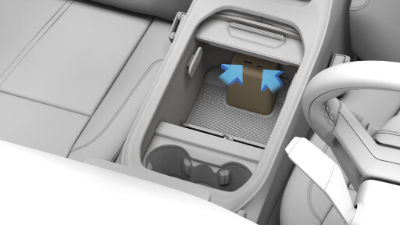
- Two more USB-C ports can be found on the rear of the front center console.
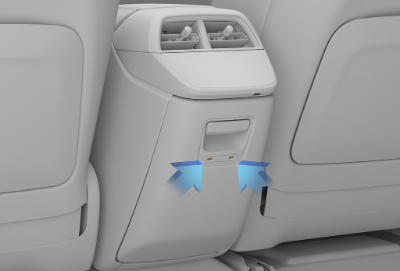


A wireless charging pad is located in the center console storage compartment.
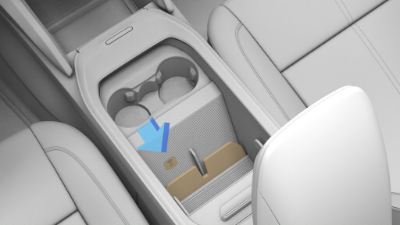
Insert the phone into the left clip with the back of the phone in contact with the side of the storage compartment to charge a mobile phone with wireless charging capability.
The operating temperature for the wireless charger is −40 °C (−40 °F) to 60 °C (140 °F).
This device complies with part 15 of the FCC Rules. Operation is subject to the following two conditions: (1) This device may not cause harmful interference, and (2) this device must accept any interference received, including interference that may cause undesired operation.
Changes or modifications not expressly approved by the party responsible for compliance could void the user's authority to operate the equipment.
This equipment has been tested and found to comply with the limits for a Class B digital device, pursuant to part 15 of the FCC Rules. These limits are designed to provide reasonable protection against harmful interference in a residential installation. This equipment generates, uses and can radiate radio frequency energy and, if not installed and used in accordance with the instructions, may cause harmful interference to radio communications. However, there is no guarantee that interference will not occur in a particular installation. If this equipment does cause harmful interference to radio or television reception, which can be determined by turning the equipment off and on, the user is encouraged to try to correct the interference by one or more of the following measures:
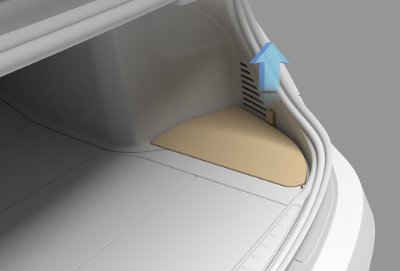
A 12-volt power socket is located in the trunk and can be accessed by removing the RH floor panel.
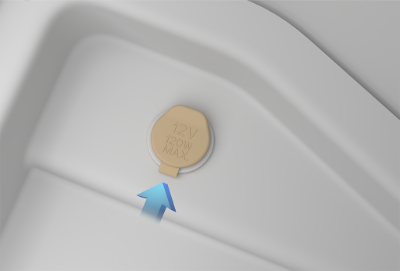
The power socket is primarily provided for use with the tire repair kit, but can also be used for other accessories requiring up to 15A or a maximum of 180 watts.